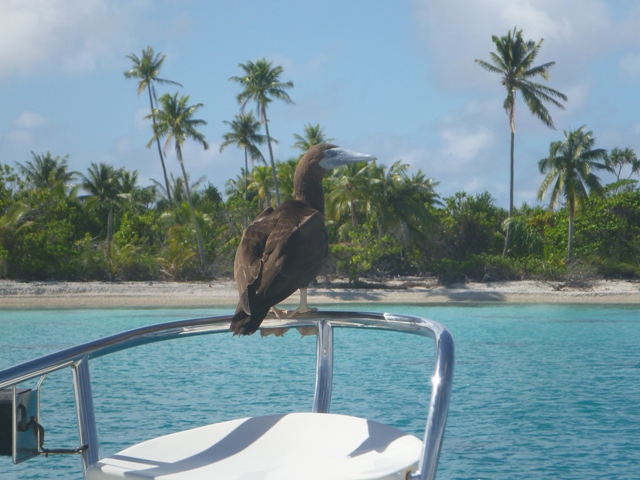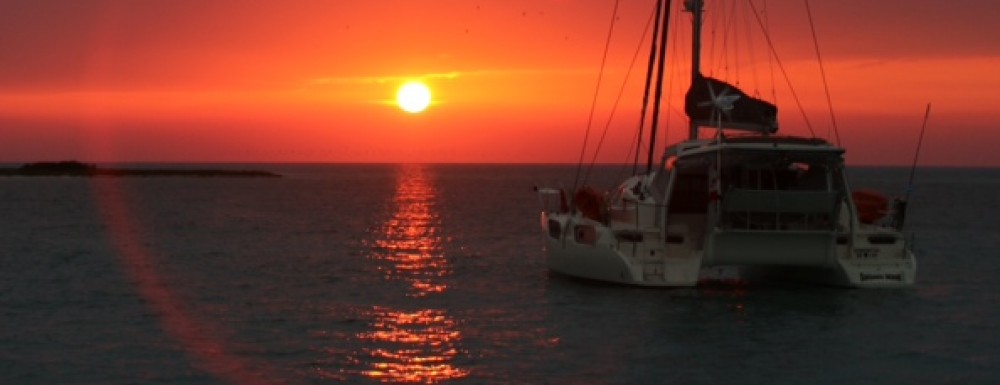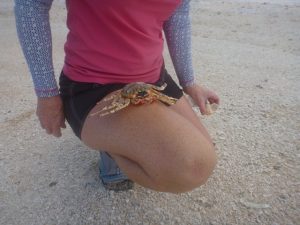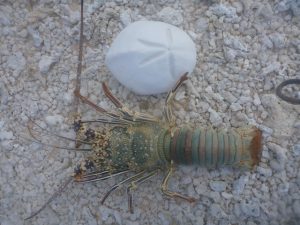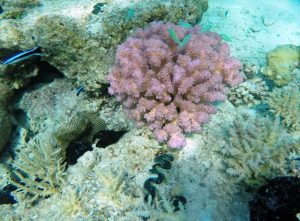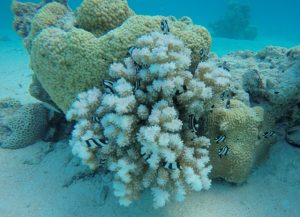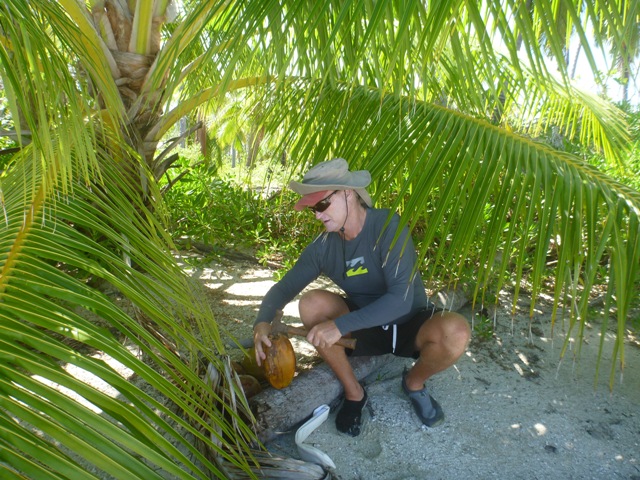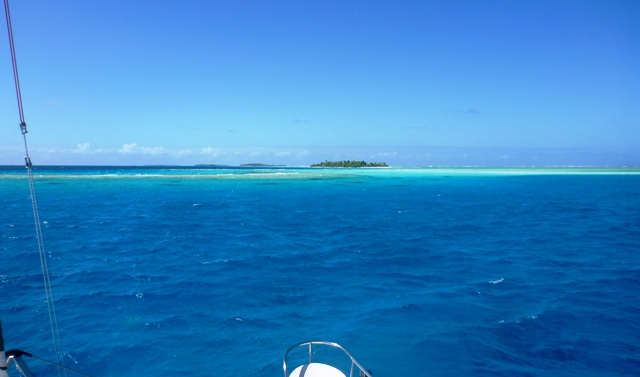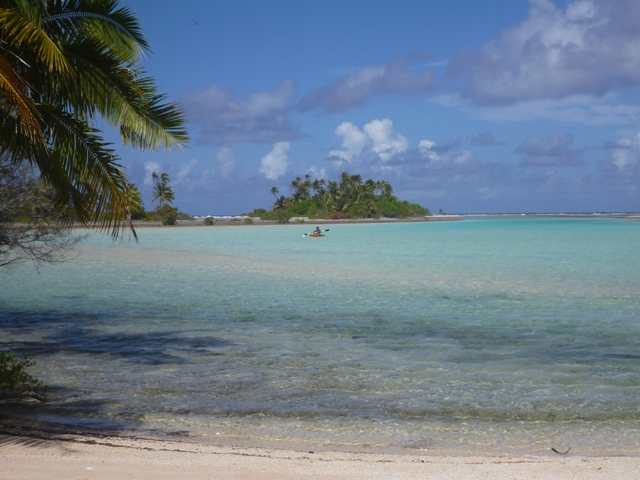We left Nuku Hiva after hearing that 50 ARC boats were on their way from Hiva Oa and so with the choice of some 76 atolls in the Tuamotus chain we headed south towards Raroia, the Eastern most atoll. It was a speedy trip with 12-15 knots of constant wind from the East on our beam or forward and flat seas. On the 450nm trip our freezers were filled up on day 1 with 2 good sized tuna. Our arrival at the Raroia pass was right when we thought slack tide was but ahead in the pass was boiling water and eddies and so we powered thru with 4 knots against us; damn!
As the sun was high in the sky we made our way over to the East side of the lagoon passing isolated coral bommies close to the surface and anchored off our very own desert island. Perfect view to wake each morning and see the different shades of turquoise water, white sand beaches and coconut trees beckoning us to visit. Lots of motu’s to kayak to and snorkel back.


The reef and motu walking here was good exercise with all sorts of things to spot. Even picked up some runaway styrofoam pearl buoys on the shores to help keep the anchor chain elevated amongst coral. Works a treat to not get wound around coral.
Underwater life here was a lot better than most places we have been to over the past year. Coral that was alive and colorful, with fish life. We spotted all sorts of reef fish, moray eels and lots of grouper hiding out but there’s no eating these guys as there’s ciguatera here. Of course the black tip sharks were everywhere and curious, following us as we snorkeled.
At one of our anchorages we had a family of Giant Manta Rays who for 4 days in a row would come and play in the shade of the boat. We jumped in the water and watched them do spins right beside us showing their undersides. Seems to be something they like to do and very cool to watch.
We found lots of pretty motu’s on the East side, one being Kon-Tiki island, a tiny motu that became famous when in 1947 Norwegian adventurer Thor Heyerdahl grounded his hand built reed raft on the reef after sailing 4000nm. He was trying to prove that ancient Mariners had possibly come to these lands from South America. The crew all survived and after building a fire on the island were spotted on the western side of the lagoon by the local people, some 8nm away and eventually rescued.
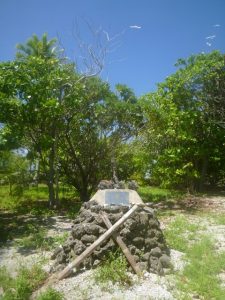
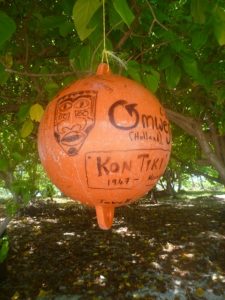
We also anchored past the local Pearl farm so stopped by but were just a few weeks too early to see them busy at work harvesting, cleaning and opening shells to find the pretty black pearl that costs so much in the shops.
Sam showed us around the grounds and took us out to the docks to show us how shells are tied together and strung up for growing. Out in the middle of the lagoon you could see lots of balls where the shells hang below allowing the pearls to grow, for approximately 18 months, till they are ready to harvest. Looks like a lot of work. Pearl farms used to be big business in French Polynesia but has decreased hence the reason there’s now so many abandoned buoys.
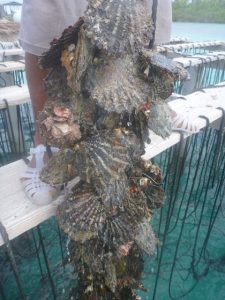
The leisurely overnight sail to Makemo atoll allowed us time to set up to the pass perfectly and then transit thru the lagoon with the sun high above us to a nice anchorage, Punaruku in the middle of the atoll. We used the kayaks to explore the shallow shores and get to places we couldn’t with the dingy and of course get our exercise.


It’s always interesting going ashore to see what you can find. Exploring we stumbled on a private grave yard with lots of headstones dating back to the 1920s & earlier by the look of things.
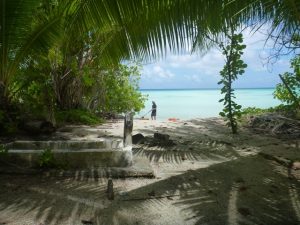
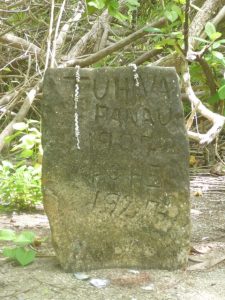
There were some big bommies that we had passed on our way to our anchorage so we returned to snorkel a few and were surprised that they were a lot more alive beneath the surface with plenty of fish life.
Our next atoll was Tahanea , supposedly a marine reserve that is meant to be uninhabited. We first choose an anchorage off a motu in the SE corner tucking in so there was no coral around. On our second day we saw someone walking along the beach with a spear and later returning with fish. Henri had been put on this motu for a month to work getting the copra from the coconuts.
Since we found an anchorage that wasn’t too deep we decided to remove the props, antifoul and grease them. Sailings not all about margaritas and swimming; work has to be done and OK sometimes it’s in paradise. Margaritas after of course.
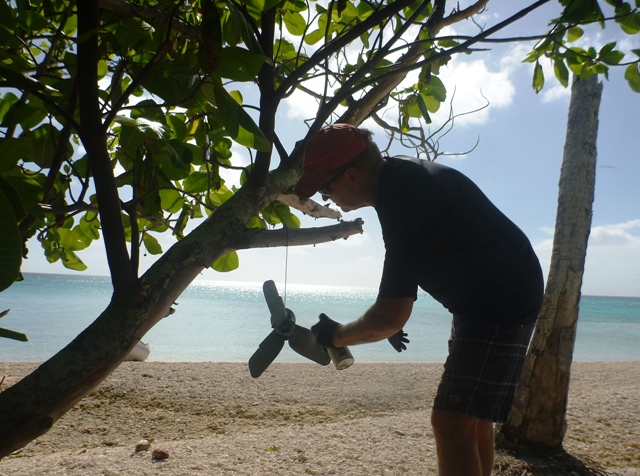
We went out to a nice anchorage at a reef on the SW side of the lagoon. Beautiful setting that’s for sure just tucked behind the reef for wind & wave protection. Over at the closest motu we found a mooring in a channel with lots of fish life and reasonable coral. The best coral seems to be where the current moves giving it nutrients to help it regenerate.
Our highlight here was drift snorkeling the pass with friends we’d met in mainland Ecuador S/V Outer Rim and S/V Spunky. It’s an amazing feeling being transported with the current thru the pass over colorful hard corals along with all sorts of different sized fish. We did this a couple of days as we were lucky and had calm weather.

Our last atoll we visited was Fakarava the second largest atoll at 30 miles long and 10 miles wide. The south pass is well known for its snorkeling and diving and so we were looking forward to drift snorkeling. We definitely were not disappointed gliding over sharks, large groupers, lots of reef fish and hard corals. Lots of days were spent here drifting the pass.



Kayaking to the small community of Tetamanu at the pass, where approx 50 people live on the motu, we found the small church of Maria built in 1862 with its brightly colored mother of pearl altar that had survived a cyclone that destroyed the area. The church is definitely well kept with nice bright colors inside.
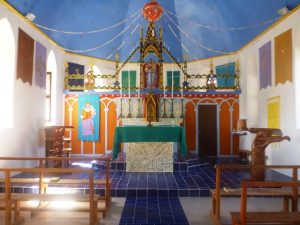
The swimming pool located at the south end of the docks opposite the church was also a good place to enter the pass where we found lots of black tip sharks and 2 huge Napolean Wrasses meandering in the shallows. Making our way out thru the rebar to the pass the coral and fish / shark life was all around us. We went with the current around past the resort and into a bay where we picked up the kayaks and continued drifting back to the boat. Good exercise that’s for sure.

While in Fakarava we had a couple of days with stronger winds which was a little uncomfortable on the mooring so decided to move up to Hirifa at the SE corner of the atoll for a change of scene. Great protection and very pretty. Liza’s snack shack was open so we stopped by for dinners and left some memorabilia on her wall as you do.
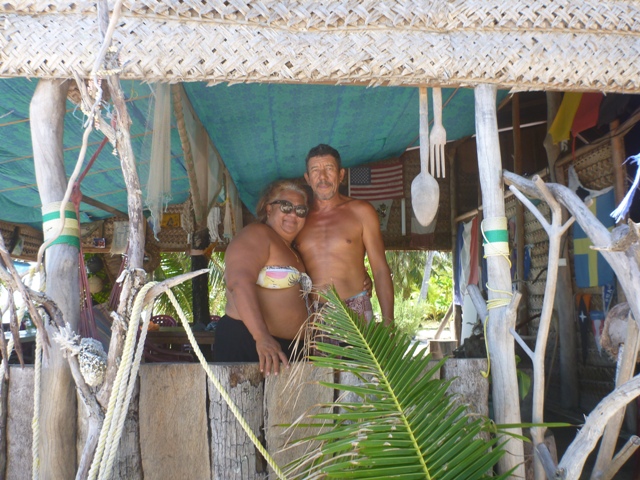
Heading up towards the town of Rotoara there were lots of pretty bays you could anchor in so we took advantage as we had time. Rotoara has the most action we have seen in just over a month with 2 supermarkets, restaurants, 2 churches and a school. The Aranui (a working cruise ship) that supplies some of the islands with fresh produce and goods was anchored off town delivering crates into the quay.
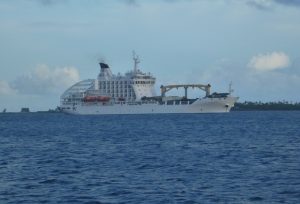
The winds were going to die for a week so we decided we’d take advantage of the winds while they were there to head to the big smoke of Papeete in Tahiti.
So it was goodbye to the Tuamotus and its wildlife.
